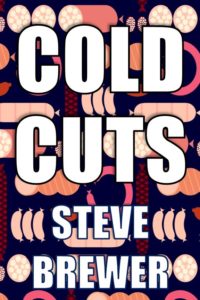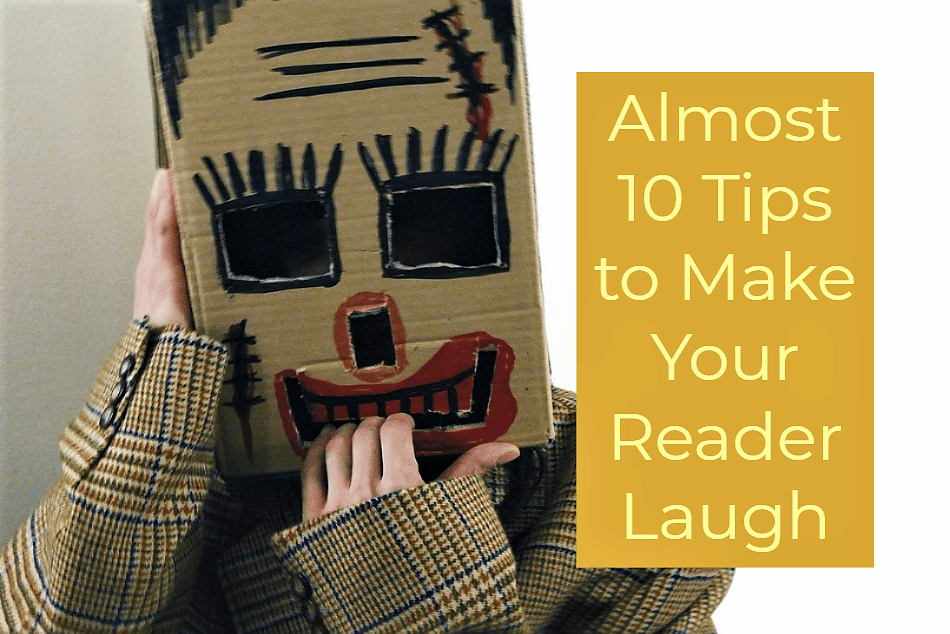by Steve Brewer
When I was child in Arkansas, foul-tasting medications were always chased with a spoonful of sugar. The sweetness on the tongue made it easier to take your medicine.
In writing, humor can act as the spoonful of sugar. A bit of wordplay, a twisty phrase or some snappy dialogue can keep the reader engaged. Every time you make readers laugh, you give them a little gift, and that keeps them reading.
I’ve tried to write funny stuff for 30 years, and I can tell you it’s not as easy as it looks. Humor must seem as if it’s occurring naturally, no matter how much the writer sweated to make it perfectly fit. Such spontaneity must be carefully planned.
Fewer than 10 Tips
1. First, make sure humor is appropriate to the scene. I recently listened to a mystery author read her opening and I cringed at how her cozy characters went on and on, swapping wisecracks over a freshly discovered corpse. Plus, they trampled all over the crime scene! Better to save the funny stuff for the right spots.
2. Tight, simple sentences are best, but rhythm is important, too. Arrange the sentence (or paragraph or tweet) so the humorous or surprising part is at the end. Like a punchline.
3. The Rule of Three: Whenever you make a list or a repetition, the third item is the funny one. “The wedding party celebrated with toasts, dancing and cannibalism.”
4. Some words “sound” funnier than others. Part of polishing your prose should be replacing dull words with words that have pizzazz. Funny words often have hard sounds like Ks and hard Gs–think “gherkin.” “Motor” doesn’t sound funny but “crankcase” does. “Crankshaft” is even funnier because of the slight suggestion of sexual tension.
The funniest word in the English language is “kumquat.”
5. Comic characters are great. The protagonist in my latest crime novel, Cold Cuts, is a smuggler named Lucky who’s been struck by lightning three times. But it’s better if the characters don’t know they’re funny.
6. It can be comical when such characters are repeatedly frustrated by obstacles. Readers can enjoy the characters’ suffering from a safe distance. As Mel Brooks said: “Tragedy is when I get a paper cut on my finger. Comedy is when you fall down a manhole and die.”
7. You can’t force funny into every sentence. Not only would that exhaust the readers, it would take them completely out of your story.
8. Go easy on puns. A little goes a long way. Use language in a creative, humorous way, but keep it conversational. Do not force a character to say something totally out of character just for the sake of a joke.
9. Polish the funny parts even more than the other parts of your story. Read them aloud, looking for rough spots.
Humor is one of the best tools in the writer’s toolbox. Use it on your crankcase, and you’ll go far.
In what novel did you think humor was effectively used by the author to better engage its reader? Or, to put another way, what book made you LYAO? Share with us on Facebook.

 Steve Brewer is the author of 31 books, including two humor books (Trophy Husband and 1500 Rules for Successful Living) and many comic crime novels. His first novel, Lonely Street, was made into a Hollywood comedy in 2009 and Bank Job is now in development. Brewer wrote a weekly syndicated humor column from 1998-2008. Since 2009, he’s posted daily Rules for Successful Living on Facebook/Twitter. In late 2018, he and his family opened Organic Books, a used-and-new bookshop in Albuquerque’s historic Nob Hill district.
Steve Brewer is the author of 31 books, including two humor books (Trophy Husband and 1500 Rules for Successful Living) and many comic crime novels. His first novel, Lonely Street, was made into a Hollywood comedy in 2009 and Bank Job is now in development. Brewer wrote a weekly syndicated humor column from 1998-2008. Since 2009, he’s posted daily Rules for Successful Living on Facebook/Twitter. In late 2018, he and his family opened Organic Books, a used-and-new bookshop in Albuquerque’s historic Nob Hill district.





